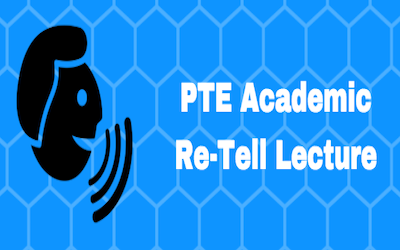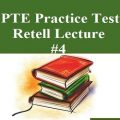说起PTE口语,难题除了Repeat Sentence之外,同学们公认的最难的一道题就是Retell Lecture,这道题和听力联系的极其紧密,稍有不慎口语和听力将双双gg,做好Retell Lecture,听力分数才能有高分的可能。
今天就为大家带来2018年四篇Retell Lecture高频机经的音频资料,到底会不会,听了就知道!
3.
Transcript:
The future of our cities, if we do it right, is gonna be super cool I mean. We’re talking about growing biological material as the literal foundation of a whole city we’re gonna get there through. We can live in a variety of different places so when you think of deserts you probably think like brown and Dead’s not great, but we could actually transform the Sahara into a pretty lush desert. NASA’s Goddard Institute for Space studies had laid out a plan to pump desalinated seawater from the coast into the Sahara, and it could use these pipes to irrigate fields of eucalyptus trees, as the trees took root they would replenish the soil and cause more rainfall which would then even more growth. Because eucalyptus survives well in heat and then it could be watered using those pipes. But over time they took root it would lower the Sahara’s temperature by 8 degrees Celsius bring clouds in because of increased humidity to reflect the sun’s rays back into space cooling it down a little more and the trees could capture 8 billion tons of carbon per year which would be amazing. Of course, there’s a few problems with this the main problem being that it cost like 2 trillion dollars that’s kind of a lot. We can even live underwater. It’s expensive but it is also possible the technology exists to create underwater colonies now for like a hundred people at a time. They used plans from like bunker like habitats but there are problems. You know you have different diseases when you live in closed environments like that. Not to mention you are not going to see as much of the Sun. So you’re gonna have problems with paleness and vitamin D production issues.
4. Licking and grooming
Rat takes care of its pups by licking and grooming nipple switching and arch back nursing so the rats that do a lot of licking and grooming and their lads rats that were very little but most rats are in between, so that resembles a human behavior as well. You have mothers that are highly mothering and mothers that could care less and most mothers are somewhere in between. So if you look at these rats, all you do observe them in separate cages. You put the high lickers in one cage not the mothers but the offspring and the low lickers in another cage and then you let them grow and they’re adults now. Their mothers are long buried, and you look in the brain and you see that those who had high licking mothers express a lot of glucocorticoid receptor gene, and though so our low lickers express no that reflects a number of receptors and that results in a different stress response. But this is not the only difference we found later on. There are hundreds of genes that are differently expressed so if you get a mutation you know a polymorphism once in a million here just the motherly love changes hundreds of genes in one shot and it changes them in a very stable way that you can look at the old rat and you can say whether it was licked or not. You can also say by behavior, so if you walk to the cages to the room the rats were poorly lit are highly anxious and hard to handle aggressive. And the rats that were very well handled as the little pups they are much more relaxed much easier to handle. So you know like every technician in the lab knows looking at the adult rat how it was late when it was little pup.
文波陪伴,英语不难!
文波陪伴,PTE不难!
文波英语培训学校,澳洲最负责最有效的英语培训学校!





